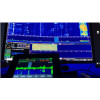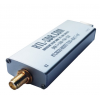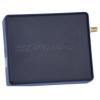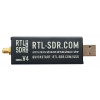Shopping Cart
0 item(s) - R0.00- 3D Printing and Plastic peripherals (8)
- 433Mhz and Lora (9)
-
Amateur Radio (651)
- - Antenna Analyzer (12)
- - APRS (12)
- - ATU (5)
- - CW (1)
- - Digital Modes (9)
- - DMR (4)
- - Echolink (10)
- - Enclosure (13)
- - Eshail-2 (QO-100) (67)
- - GPS (8)
- - iGate (1)
- - Microcontrollers (43)
- - Microphone (1)
- - Power Supply (7)
- - Programming Cable (6)
- - QRP (9)
- - Radio interface (21)
- - Receiver (9)
- - Repeater (4)
- - RF Amplifiers (20)
- - RF Kits (19)
- - RF modules (116)
- - Rotator (1)
- - SDR (75)
- - Spectrum Analyzer (4)
- - SWR (9)
- - Transceiver (59)
- - WSPR (5)
- Antennas and Acc (320)
- Audio and Video (28)
- Bargain Box (1)
- Battery (3)
- Bluetooth (11)
- Cables (37)
- Computer Peripherals (104)
- Connectors (90)
- Data acquisition (1)
- Display (2)
- Electromechanical (25)
- Enclosure (12)
- GPS (6)
- Hardware (3)
- Home Automation (128)
- Inverter (9)
- Liquid (7)
- Lora (8)
- Microcontrollers (119)
- Modbus (3)
- MQTT (14)
- Network Radio (3)
- Networking (8)
- Power (133)
- Power supply (49)
- Radio Interface (17)
- RF Modules (142)
- ROIP (2)
- Satellite (93)
- Security (13)
- Sensor (17)
- Solar (14)
- Test and Measurements (66)
- Tools and Equipment (8)
- VOIP (10)
- Weather (1)
50KHz--2GHz Malahit DSP SDR Receiver
Ex Tax: R3,089.00
Add to Compare
3.5" Touch Screen 50KHz - 200Mhz and 400Mhz - 2GHz Malahit DSP SDR Receiver.

Please check the license details you will need to purchase this unit. We would require a copy of your license or callsign.
Icasa will have to issue you with the necessary license to use this unit (It will depends on the use of the device)
Advantages:
- Aluminum alloy shell
- Malahit DSP SDR Receiver
- 3.5" IPS display touch screen
- Default frequency range: 50KHz-200MHz 400MHz-2GHz
- Demodulation mode: AM, SSB, NFM, WFM

Product Parameters:
1) The radio is constructed based on SDR principle, and the function is determined by loaded software.
2) The frequency range is from 50 kHz to 200 MHz (default version) / from 50 kHz to 250 MHz, 400 MHz to 2 GHz (registered upgrade version).
3) All types of analog modulation: AM, SSB, NFM, WFM;
4) Powerful functions: variable filter width, adaptive noise suppressor, threshold noise suppressor, Noise Blanker, AGC, equalizer.
5) Use fully functional chip msi001;
6) The powerful stm32h743 with a clock frequency of 480 MHz is applied.
7) 3.5-inch IPS display touch screen.
8) There is a built-in UHF.
9) Control 2 encoders with buttons and touch screen.
10) The power supply is supplied by the external TYPE-C (for Huawei mobile phone) interface and can be charged by TYPE-C. The internal battery voltage is 3.7V and the capacity is 2500mAh.
11) The current consumption when listening to headphones is 300mA.
12) Built-in receiving module in order to improve the HF reception on antenna, an additional board with a source follower has been developed. The board will be built into the standard receiver design.
13) Connect to a computer via USB, you can transmit CAT, IQ and audio.
14) 160 kHz span, with scalability.
15) Sensitivity-Under the condition of up to 250MHz, 0.3μV = 10dB at s / w.
16) Thanks to the characteristics of the msi001 chip used, dynamic blocking range is about 85dB.
17) There is backlight control.
18) SMA female antenna socket;
19) Dimensions 102 x 74 x 29mm (excluding sizes of protrusions).
20) Weight 240g.
Front end filters (3 to 5 stage)
- 0-12Mhz
- 12-30Mhz
- 30-60Mhz
- 50-120Mhz
- 120-250Mhz
- 250-1Ghz
- > 1Ghz
Package Included:
1x SDR Receiverank Details
Simple operation instructions:
1. HARD (setting): EN1, EN2: The two encoders add and subtract directions are reversed. V bat/power display: S standard, L low voltage. SW ante/short wave antenna selection: 50ohm 50 ohm/Hi-z high impedance. ATT attenuator: same as transceiver. LNA/MIX, MIX GR: Do not turn on the functions that the machine (including the original version) does not have, otherwise the gain and sensitivity will be greatly reduced! RF GAIN/RF gain: Same as the transceiver, the sensitivity is the best when it is set at about 20. PREAMP / preamplifier: same as transceiver. F correct / frequency correction: use as needed. Sm correct/S meter correction: use as needed.
Time setting: Long press HARD to enter the time setting, then press the volume encoder to increase or decrease the number, and press inward to switch. When finished, press and hold the encoder, and release it when the beep sounds.
2. AUDIO (audio): NB/electric spark noise Thes/start control value and Config/setting value; these two items, I have been set to 2, you can try it yourself. NB/switch: Dis open/Ena close. AGC/Automatic gain control. AGC LIN/AGC peak value: experimental adjustment. MANUAL/manual control: experimental adjustment. AGC MODE/AGC mode: relevant, fast, normal, slow, very slow. EQ (Equalizer) EQ TYPE/Equalizer switch and selection: click first, then use the volume encoder to open and select; including light music, live, club, rock, bass, jazz, pop, language. WFM Stereo/FM Stereo: Only earphones. NR/DSP noise reduction Thes/setting value: set according to the sense of hearing. SQL Thes/setting value. SQL switch.
VISUAL (screen effect) BRIGHT MIN/minimum brightness: 20. BRIGHT MAX/Maximum brightness: 100. REDUCT TIME: 0 sec/0 seconds. SLEEP TIME/sleep time: 300 sec/sec. LCD SLEEP/backlight sleep switch: D/on, E/off. FFT ave/spectrum average speed: 50. FFT scale/spectrum display range: 50. FFT color/spectrum color: four kinds. Pan percent/frequency spectrum shift%: 70. WTF delay/spectrum reflection delay: 0. WTF Gain/spectrum reflect gain: 0dB. FFT fill/spectrum fill: D/on, E/off.
MODE (mode) is the same as the transceiver, and its decoder is a CW decoding switch. After opening, there is a small white bar below the frequency. After opening, "Min SNR/minimum level" appears: adjust as needed to make the decoding more accurate.
BAND (Band) Band key, you can switch between bands and memory selection. The memory is divided into 5 pages, 10 per page; it can be stored in a certain memory arbitrarily. Ready to call. When storing, first adjust the frequency, mode, step, AGC, RF Gain, FLT parameter, PRE and other data, then select the memory page and location, press and hold the memory box with your finger, and release it after hearing the "beep" sound. .
Select the frequency step: press the frequency knob to switch to step mode, and then use the frequency knob to adjust as needed. The minimum step is 10Hz and the maximum is 30KHz.
Running IQ to HDSDR (two audio devicess and serial interface on USB interface)
1) Demodelated Audio from SDR
2) Row IQ Signal from SDR for HDSDR
3) Serial interface to control SDR radio

HDSDR sdr software displaying SDR signal

When the little receiver is connected via its USB port to a personal computer, a new serial port appears.
In Linux/Raspberry it’s mapped to /dev/ttyACM0
Sending Kenwood CAT commands through this port permits, among other things, to set the tuned frequency so it was an easy task to write a minimal Python script that reads the transceiver’s frequency and writes it to the Malachite periodically. The effect is that the Malachite follows the transceiver’s QRG, like a real panadapter.
The RF is sampled in the transceiver’s RX path just after the preamplifier and before the first mixer, usually there is a ready-to-use connector on the pcb designed for the alignment procedure.
Instead to use the serial port where the transceiver is connected to, I choose to interface it with the Hamlib rigtctld utility.
Rigctld permits to control via CAT almost any transceiver with a socket connection over the network instead of the serial port. This is a big advantage because the serial port can be opened only by one application at time. With rigctld there is no the single app limit and, as example, the python script can run simultaneously to WSJTX and/or a log program that need the CAT connection to the rig.
Controlling the Malachite via serial port
Install Grig and Hamlib
This is the command line I use to start the rigctl daemon:
rigctld -v -m 214 -r /dev/ttyKNW2000 -s 9600 –C serial_handshake=None -t 4532
- -v means “be verbose”
- -m 214 is the rig model, Kenwood TS-2000 in this case (see the rigctl man page)
- -r /dev/ttyKNW2000 is the serial port physically connected to the rig
- -s 9600 is the baudrate
- -C no handshake needed
- – t 4532 is the TCP port where the daemon accepts the connections
In order to test if the rigctl daemon is running, just connect it via telnet and send the command ” f ” (lowercase), if the reply will be the tuned frequency in Hertz, the daemon is working.

Note:
- It is assembled.
- Only main unit is included. Charger, antenna and other accessories are not included. Please purchase separately.
- Its motherboard can be powered by a mobile phone TYPE-C charger for Huawei. Users can configure their own long wires as antennas for easy listening.


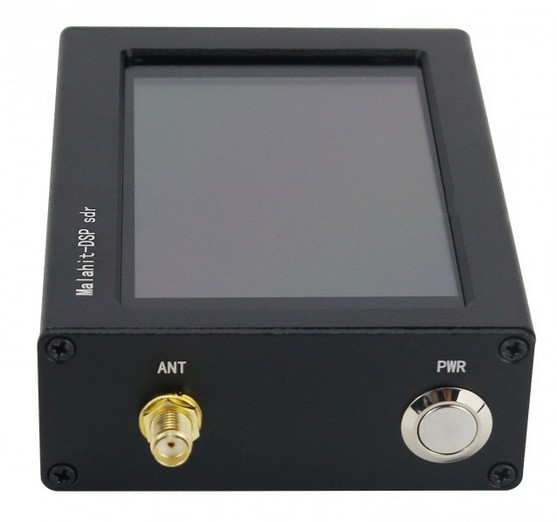
Write a review
Your Name:Your Review: Note: HTML is not translated!
Rating: Bad Good
Enter the code in the box below:
Giga Technology © 2025






